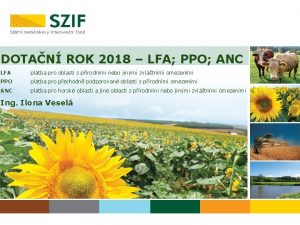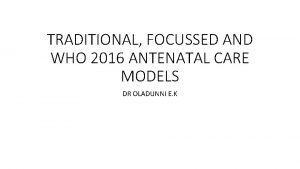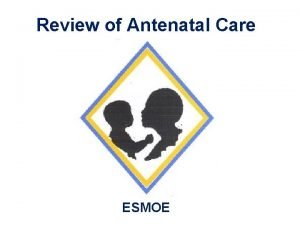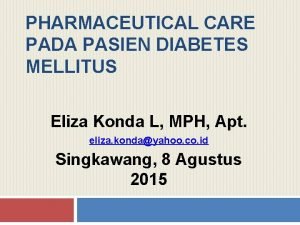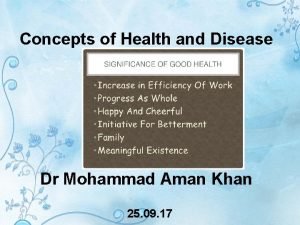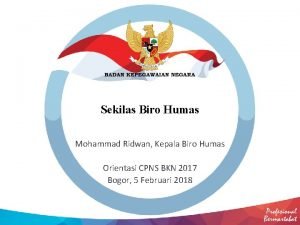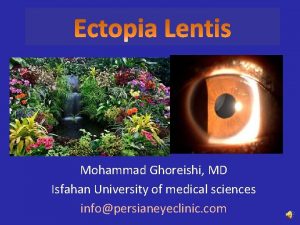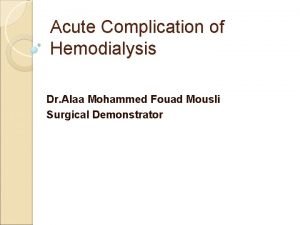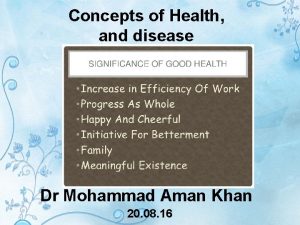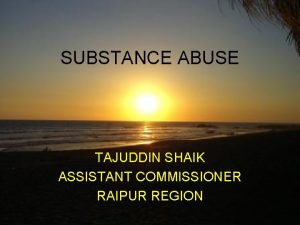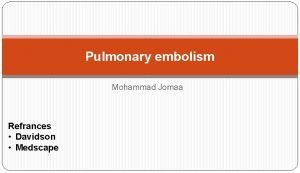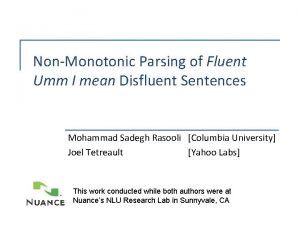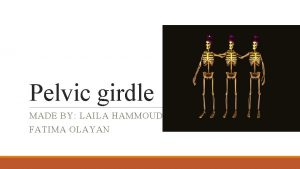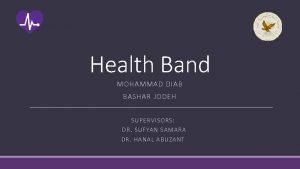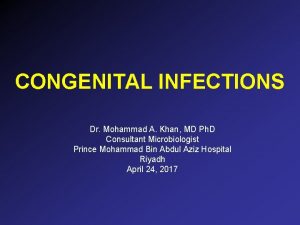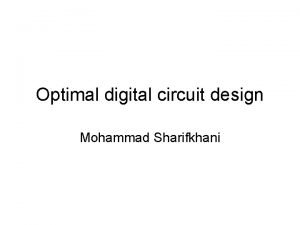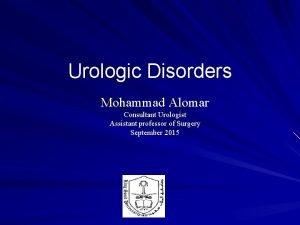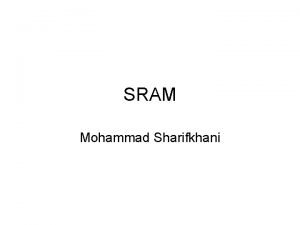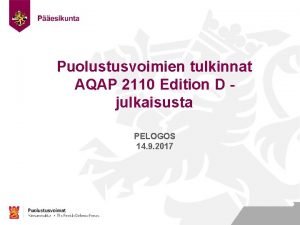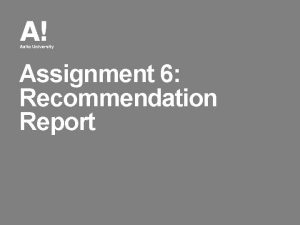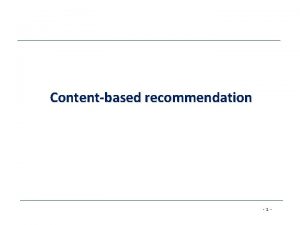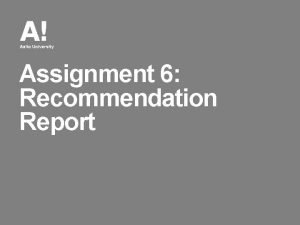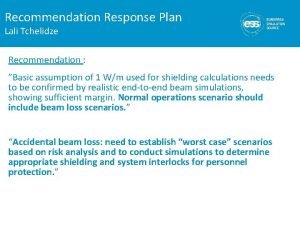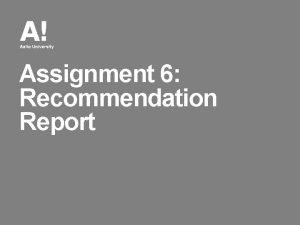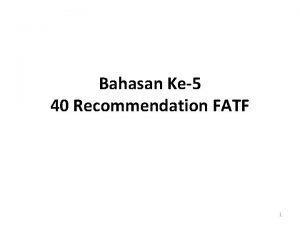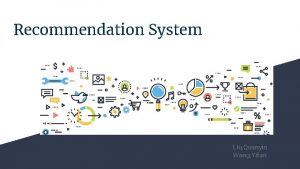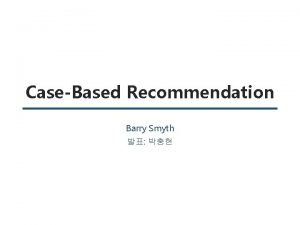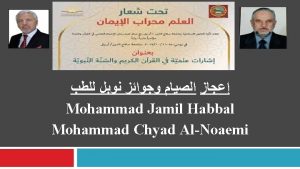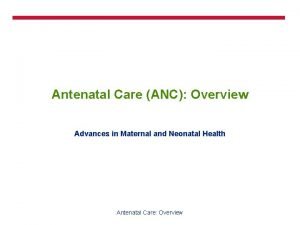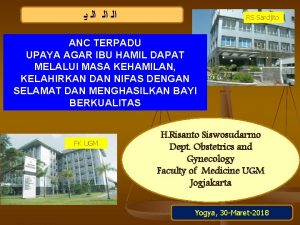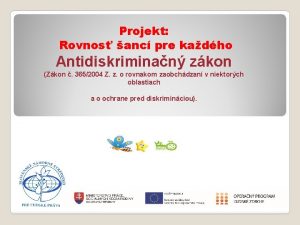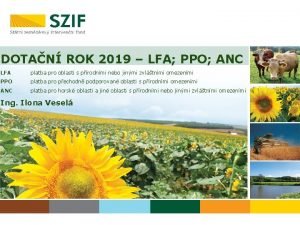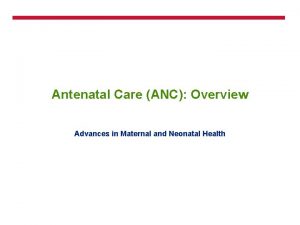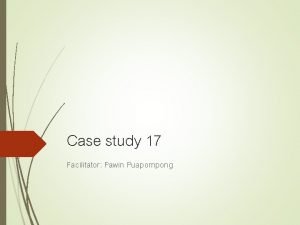WHO Latest Recommendation on ANC Prof dr Mohammad



































- Slides: 35

WHO Latest Recommendation on ANC Prof. dr. Mohammad Hakimi, Sp. OG(K), Ph. D. Divisi Obstetri-Ginekologi Sosial Departemen Obstetri-Ginekologi Fakultas Kedokteran, Kesehatan Masyarakat dan Keperawatan Universitas Gadjah Mada 1

“Traditional” ANC Gestational age Up to 28 weeks 28 -36 weeks 36 -40 weeks Frequency No. of visits Monthly 7 Once every two weeks 4 Weekly 4 Total 15 2

ANC and Maternal Mortality • Antenatal care clinics started in US, Australia, Scotland between 1910– 1915 • New concept - screening healthy women for signs of disease • By 1930’s large number (1200) ANC clinics opened in UK • No reduction in maternal mortality • However, widely used as a maternal mortality reduction strategy in 1980’s and early 1990’s Is ANC important? YES!! • Early detection of problems and birth preparation 3

Maternal Mortality: UK 1840– 1960 Improvements in nutrition, sanitation Maine 1999. Antenatal care Antibiotics, banked blood, surgical improvements 4

5

Carroli G, Rooney C and Villar J. How effective is antenatal care in preventing maternal mortality and serious morbidity? An overview of the evidence. Paediatric and Perinatal Epidemiology 2001, 15 (Suppl. 1), 1 -42. • What is striking in examining the evidence for or against the effectiveness of care during pregnancy in reducing maternal mortality or serious morbidity is how little is known. • Reports on antenatal care emphasise the same fundamental lack of certainty about the efficacy of many established practices. 6

Antenatal Care • Continuum of quality care • Antenatal period: – Health promotion – Disease prevention – Early detection and treatment for complications – Birth preparedness – Complication readiness 7

WHO ANC Model – 1 • Specific evidencebased interventions for all women • Carried out at four critical times • Focused Antenatal Care Model (FANC) 8

WHO ANC Model – 2 • Two groups of women – Basic component: routine ANC • Intended for women who do not have evidence of complications/risk factors. – Special care: Women who need additional assessment/care etc. • The assumption: 25% of the women – special care • Follow specific guidelines 9

WHO ANC Model – 3 • Critical times: – – 8 -12 weeks 24 -26 weeks 32 weeks 36 -38 weeks • Goals and activities: – – – History Examination Screening and tests Treatments Preventive measures Health promotion/counseling 10

WHO ANC Model – 4 • • • Rwanda Kenya Mozambique Madagascar Ethiopia Uganda Thailand Philippines Cambodia China Papua New Guinea • • • Afghanistan Djibouti Egypt Iraq Morocco Pakistan Somalia Sudan Yemen Armenia Kyrgyzstan 11

WHO ANC Model – 5 • Updated Cochrane review and secondary analysis of the WHO trial suggest fewer visits may be associated with increased fetal death • Actual content of and the demand for antenatal care is at best variable in different settings – DHS analysis (41 countries): Quality coverage gaps for recommended elements of care for most countries, with the exception of BP measurement 12

The 2016 ANC guideline • Essential core package of ANC that all pregnant women and adolescent girls should receive • With the flexibility to employ different options based on the context of different countries – What is the content of the model/package? – Who provides care? – Where is the care provided? – How is the care provided to meet the needs of the users? • Complement existing WHO guidance on complications during pregnancy

The 2016 ANC guideline Overarching questions • What are the evidence-based practices during ANC that improved outcomes and lead to positive pregnancy experience? • How should these practices be delivered? 14

« To achieve the Every Woman Every Child vision and the Global Strategy for Women's, Children's and Adolescents' Health, we need innovative, evidence-based approaches to antenatal care. I welcome these guidelines, which aim to put women at the centre of care, enhancing their experience of pregnancy and ensuring that babies have the best possible start in life. » Ban Ki-moon, United Nations Secretary-General 15

Types of recommendations • We recommend the option • We recommend this option under certain conditions ØOnly in the context of rigorous research ØOnly with targeted monitoring and evaluation ØOnly in specific contexts • We do not recommend this option

Recommendations on ANC 49 recommendations were grouped into five topic areas: A. Nutritional interventions (14) B. Maternal and fetal assessment (13) C. Preventive measures (7) D. Interventions for common physiological symptoms (6) E. Health systems interventions to improve the utilization and quality of ANC (9) Including 10 recommendations relevant to routine ANC from other WHO guidelines

Summary list of WHO recommendations on antenatal care (ANC) for a positive pregnancy experience 18

19

20

21

22

23

24

25

26

27

28

WHAT's NEW? 1. Antenatal care models with a minimum of eight contacts are recommended to reduce perinatal mortality and improve women’s experience of care. 2. The guideline uses the term ‘contact’ - it implies an active connection between a pregnant woman and a health care provider that is not implicit with the word ‘visit’. – Quality care including medical care, support and timely and relevant information. 29

2016 WHO ANC model

WHAT's NEW? 3. Ultrasound scan: – In the new WHO ANC guideline, an ultrasound scan before 24 weeks’ gestation is recommended for all pregnant women to: • estimate gestational age • detect fetal anomalies and multiple pregnancies • enhance the maternal pregnancy experience – An ultrasound scan after 24 weeks’ gestation (late ultrasound) is not recommended for pregnant women who have had an early ultrasound scan. • Stakeholders should consider offering a late ultrasound scan to pregnant women who have not had an early ultrasound scan. 31

WHAT's NEW? 4. ANC model – positive pregnancy experience Overarching aim – To provide pregnant women with respectful, individualized, person-centred care at every contact, with implementation of effective clinical practices (interventions and tests), and provision of relevant and timely information, and psychosocial and emotional support, by practitioners with good clinical and interpersonal skills within a well functioning health system. 32

WHAT's NEW? 5. Effective implementation of ANC requires • Health systems approach and strengthening o Continuity of care o Integrated service delivery o Improved communication with, and support for women o Availability of supplies and commodities o Empowered health care providers § Recruitment and retention of staff in rural and remote areas § Capacity building 33

Continuum of care Connecting care during the lifecycle (A) and at places of caregiving (B). 34

Kikuchi K, Ansah EK, Okawa S, et al. Effective Linkages of Continuum of Care for Improving Neonatal, Perinatal, and Maternal Mortality: A Systematic Review and Meta-Analysis. PLo. S ONE 10(9): e 0139288. • Our review suggests that continuous uptake of antenatal care, skilled birth attendance, and postnatal care is necessary to improve MNCH outcomes in low- and middle-income countries. • The review was conclusive for the reduction of neonatal and perinatal deaths. • Although maternal deaths were not significantly reduced, composite measures of all mortality were. • Thus, the evidence is sufficient to scale up this intervention package for the improvement of MNCH outcomes. 35
 Anc 2018
Anc 2018 Who anc model 2016
Who anc model 2016 Pnc tracking number
Pnc tracking number Laporan hitung jumlah leukosit
Laporan hitung jumlah leukosit Antenatal examination format
Antenatal examination format Sauropus factories
Sauropus factories Contoh soap kebidanan
Contoh soap kebidanan Brogliaccio definizione
Brogliaccio definizione Dr mohammad aman
Dr mohammad aman Mohammad ridwan bkn
Mohammad ridwan bkn Mohammad ghoreishi
Mohammad ghoreishi Dr nur mohammad hadi zahalan
Dr nur mohammad hadi zahalan Mohammad keshavarz
Mohammad keshavarz Mohammad ali abtahi
Mohammad ali abtahi Alaa mohammad fouad
Alaa mohammad fouad Dr mohammad aman
Dr mohammad aman Shaik mohammad tajuddin
Shaik mohammad tajuddin Thrombus embolus
Thrombus embolus Anovulation who classification
Anovulation who classification Mohammad moshtari
Mohammad moshtari Mohammad irfan bowdoin
Mohammad irfan bowdoin Vlsi
Vlsi Mohammad sharifkhani
Mohammad sharifkhani Sharif
Sharif Mohammad sadegh rasooli
Mohammad sadegh rasooli Mohammad hammoud
Mohammad hammoud Mohammad diab md
Mohammad diab md Dr mohammad khan
Dr mohammad khan Sumbangan mohammad eunos abdullah
Sumbangan mohammad eunos abdullah Mohammad arjomand
Mohammad arjomand Mohammad sharifkhani
Mohammad sharifkhani Mohammad ali javidian
Mohammad ali javidian Mohammad alipour
Mohammad alipour Dr elham altaf
Dr elham altaf Mohammad sharifkhani
Mohammad sharifkhani Pelogos
Pelogos
